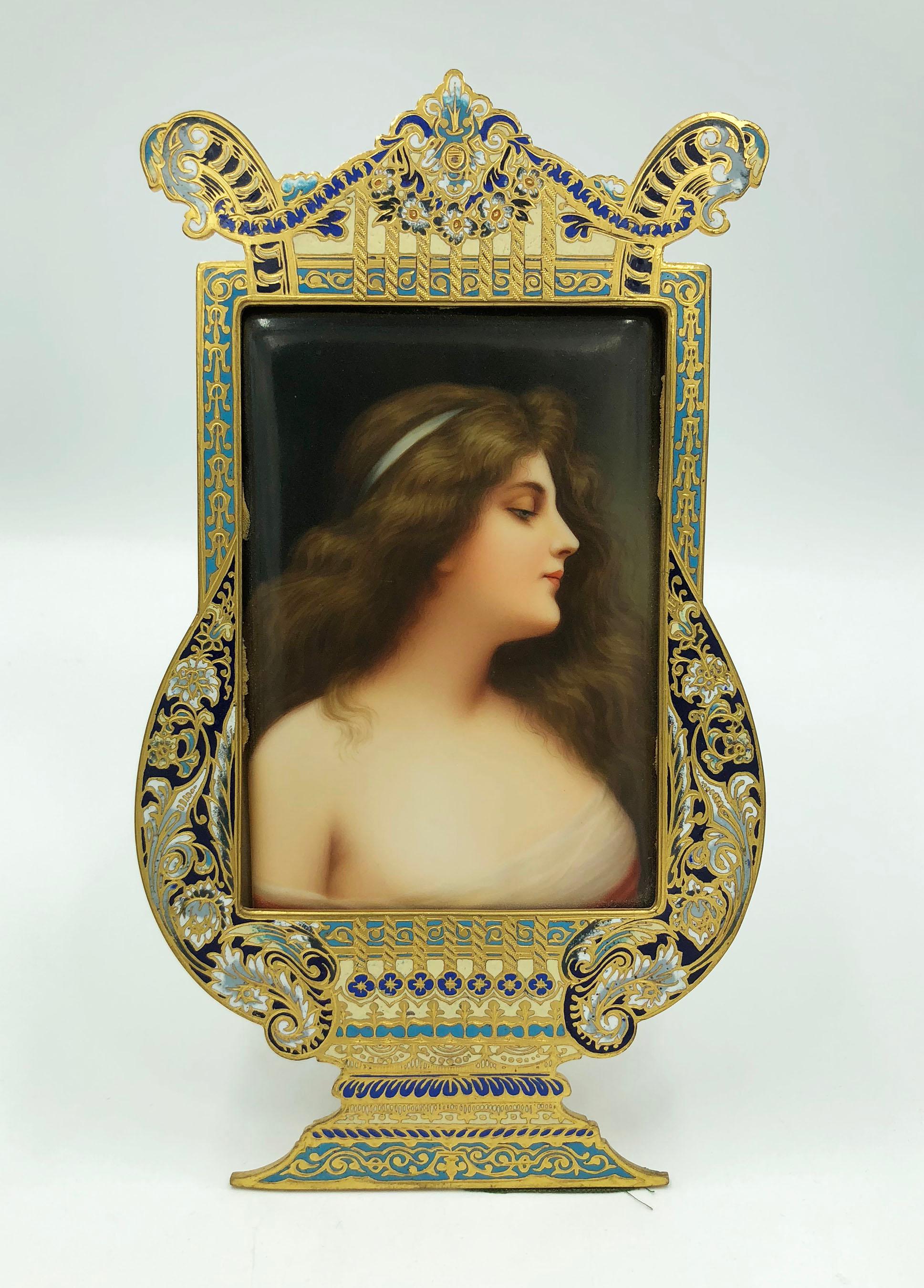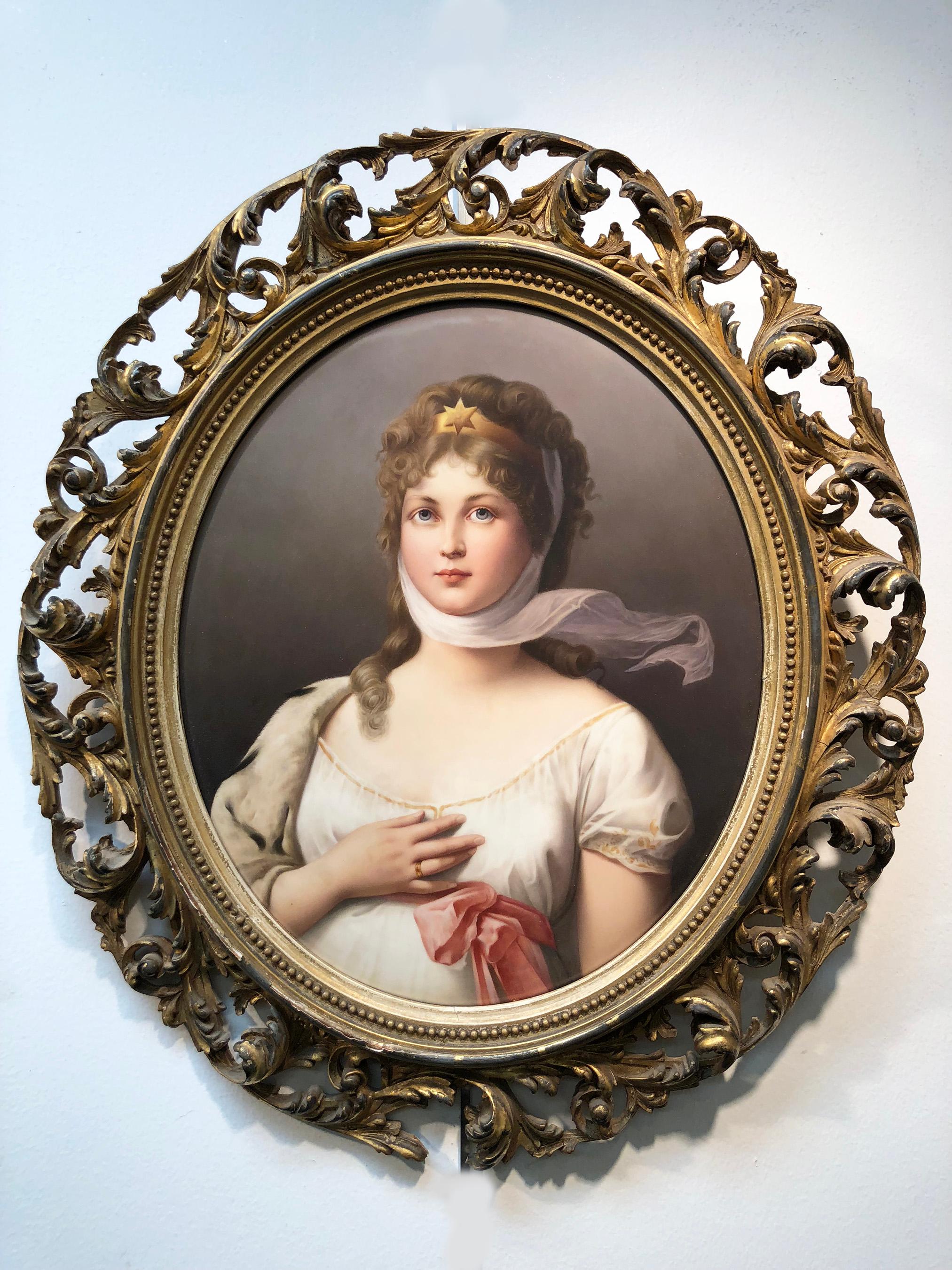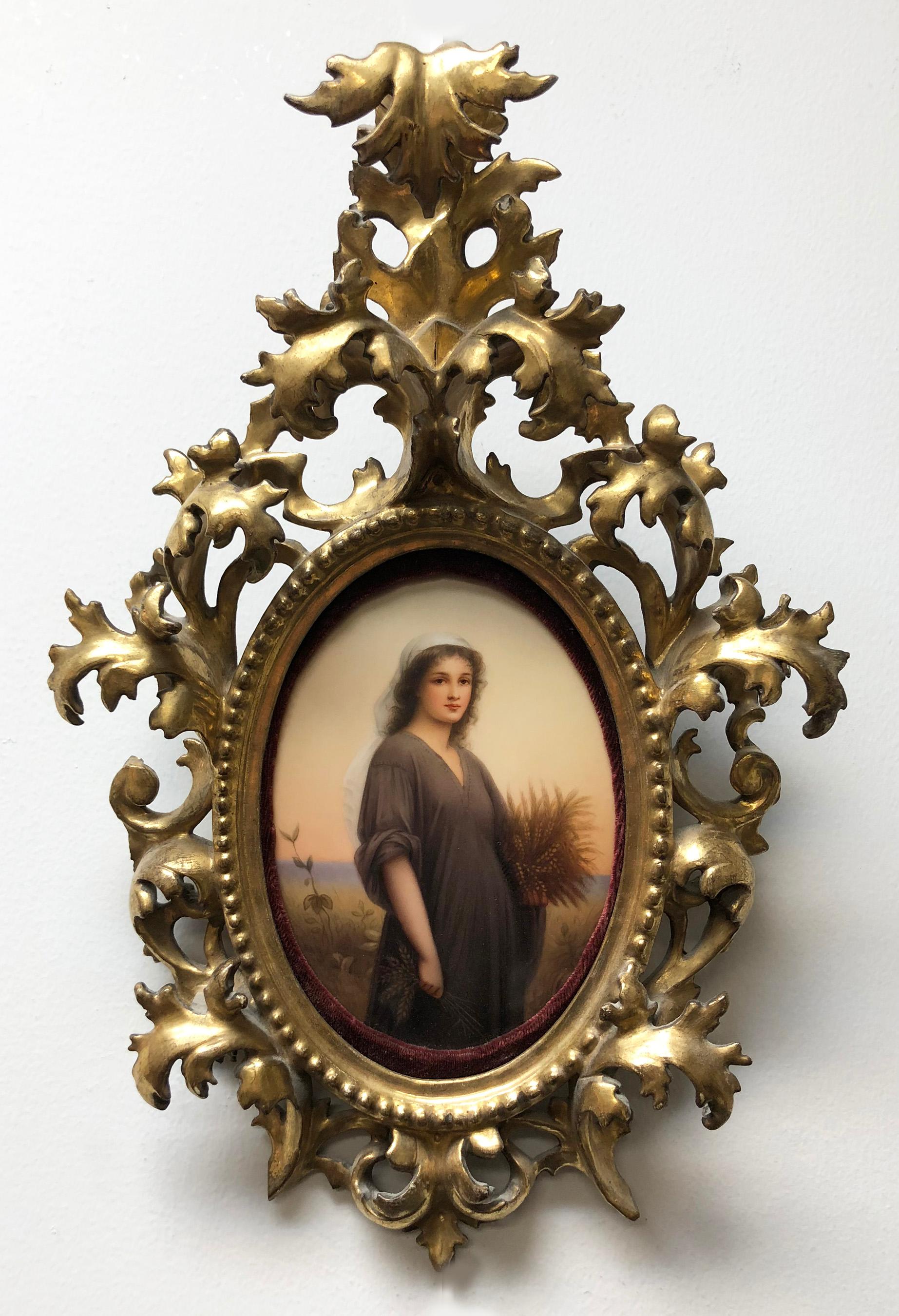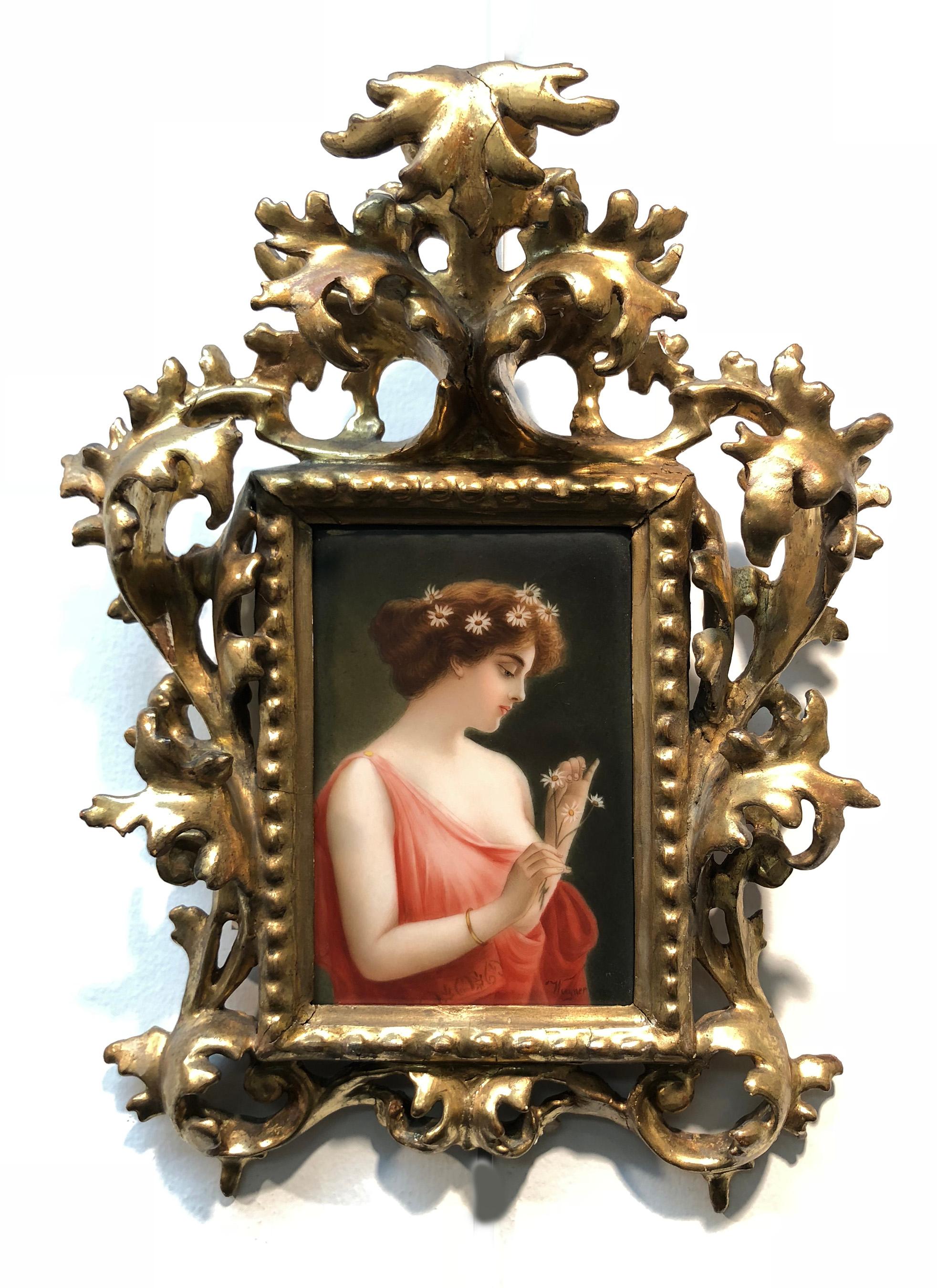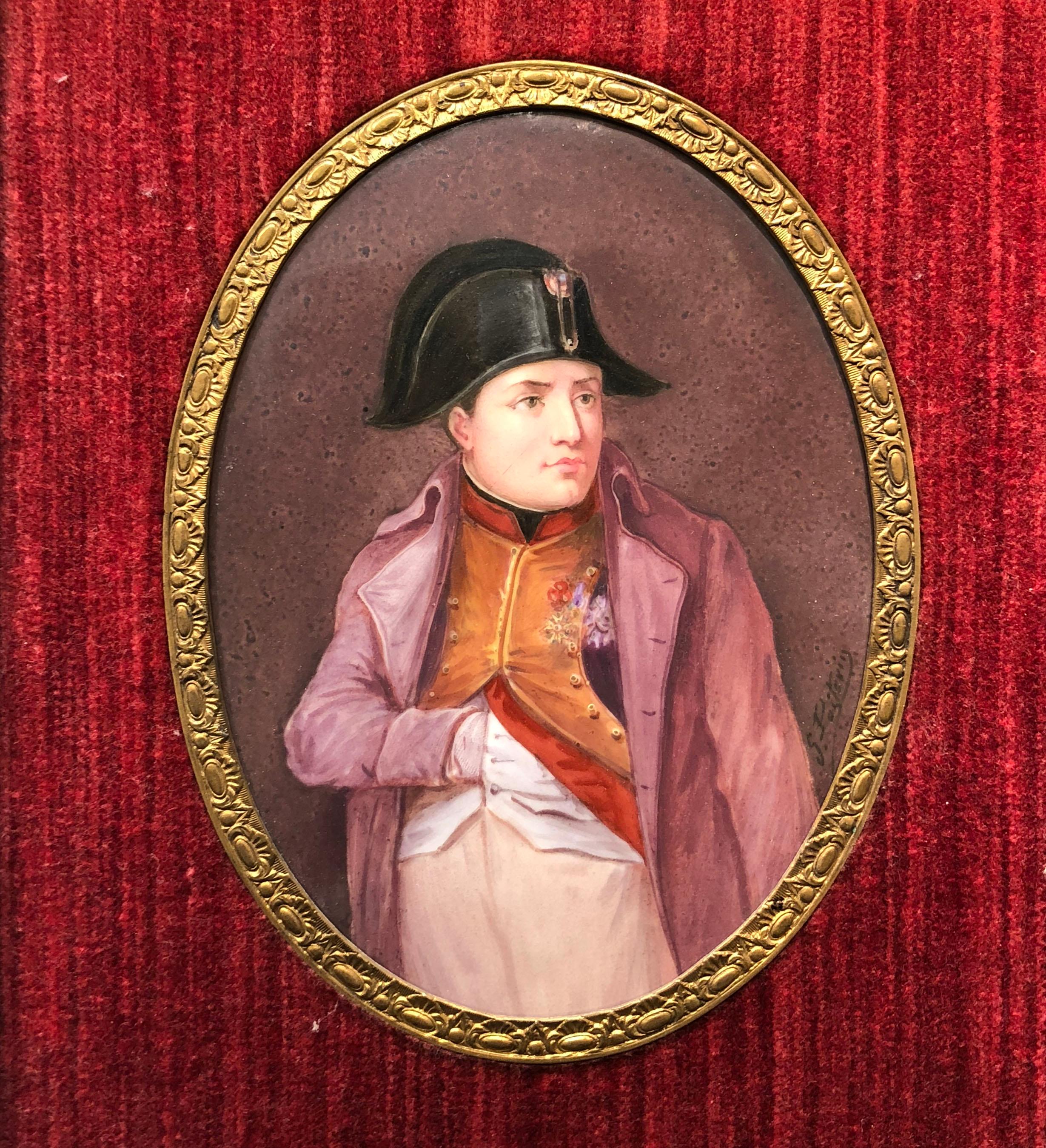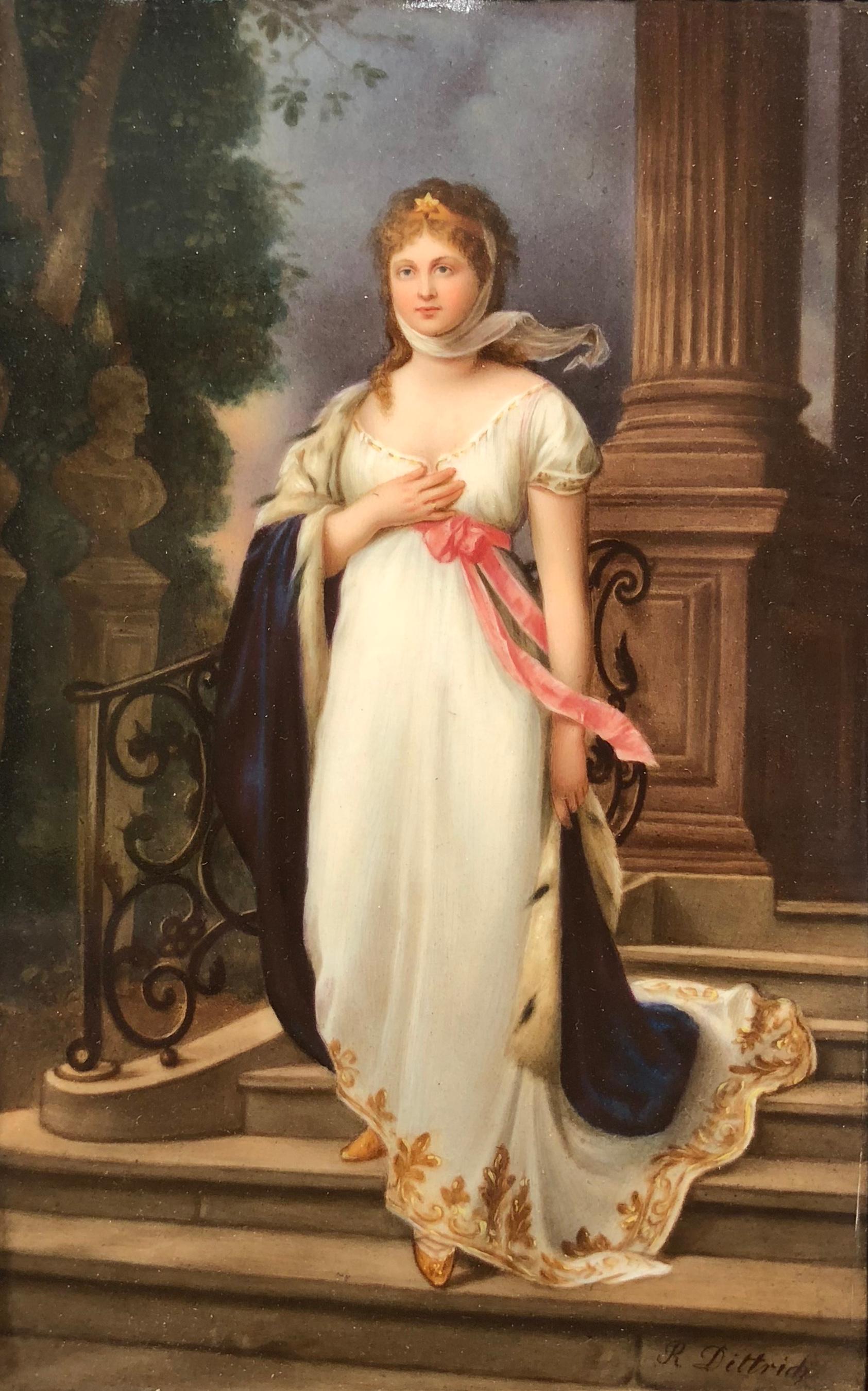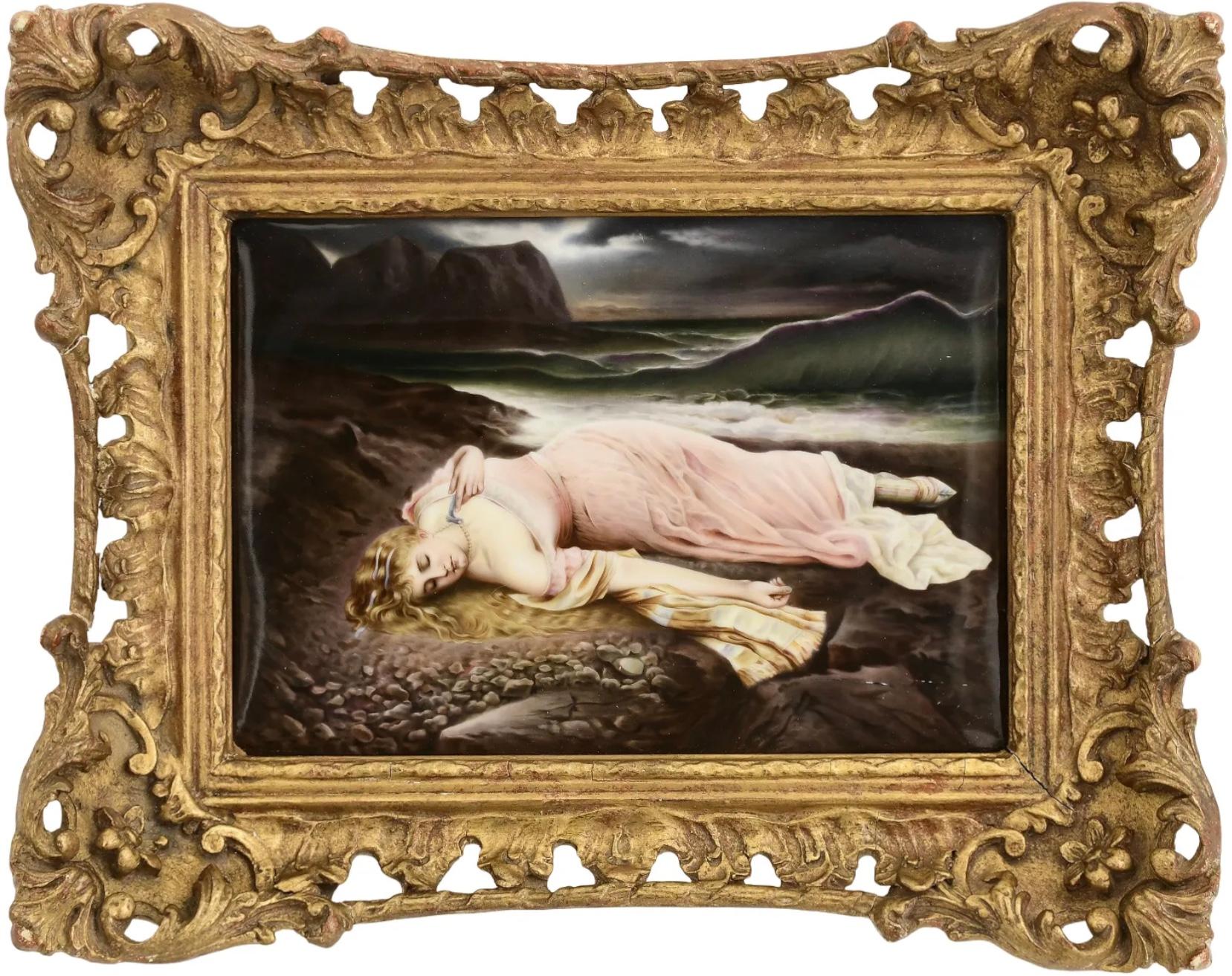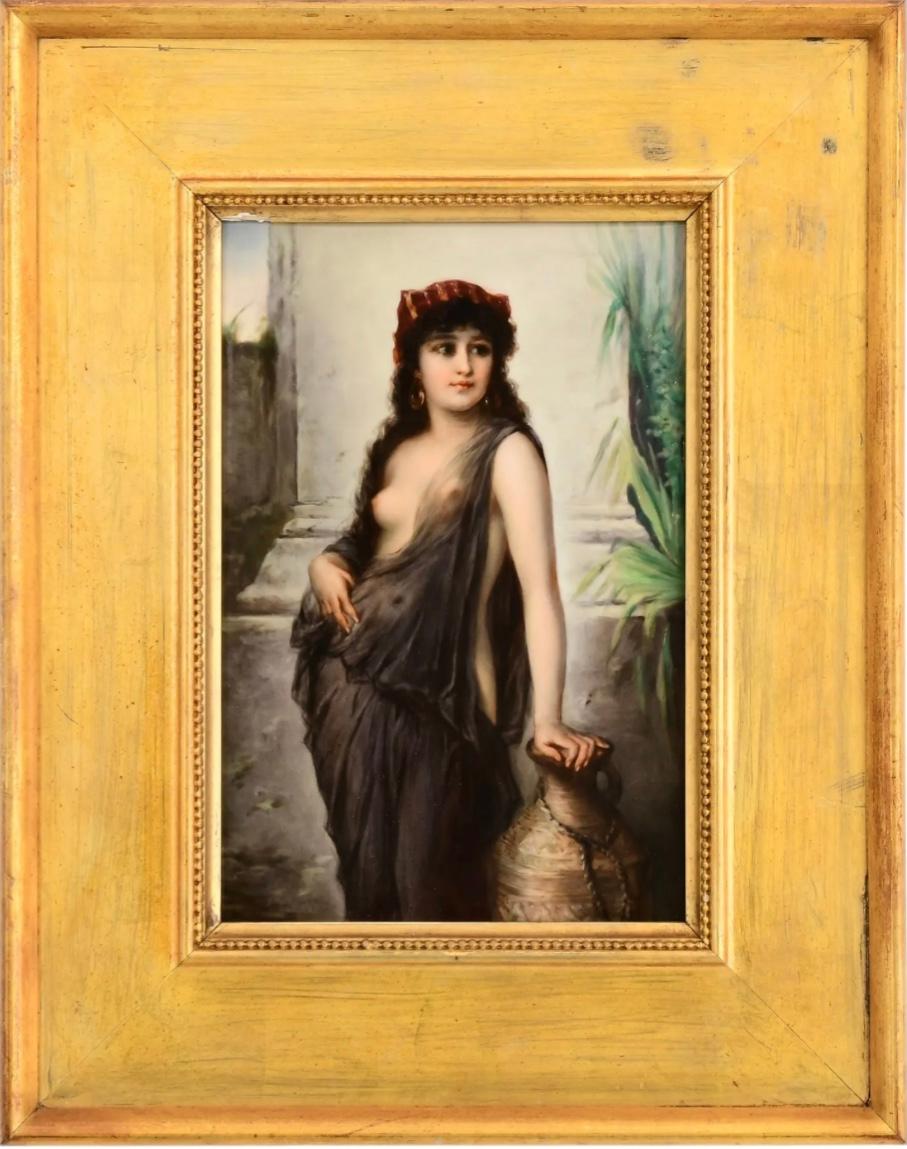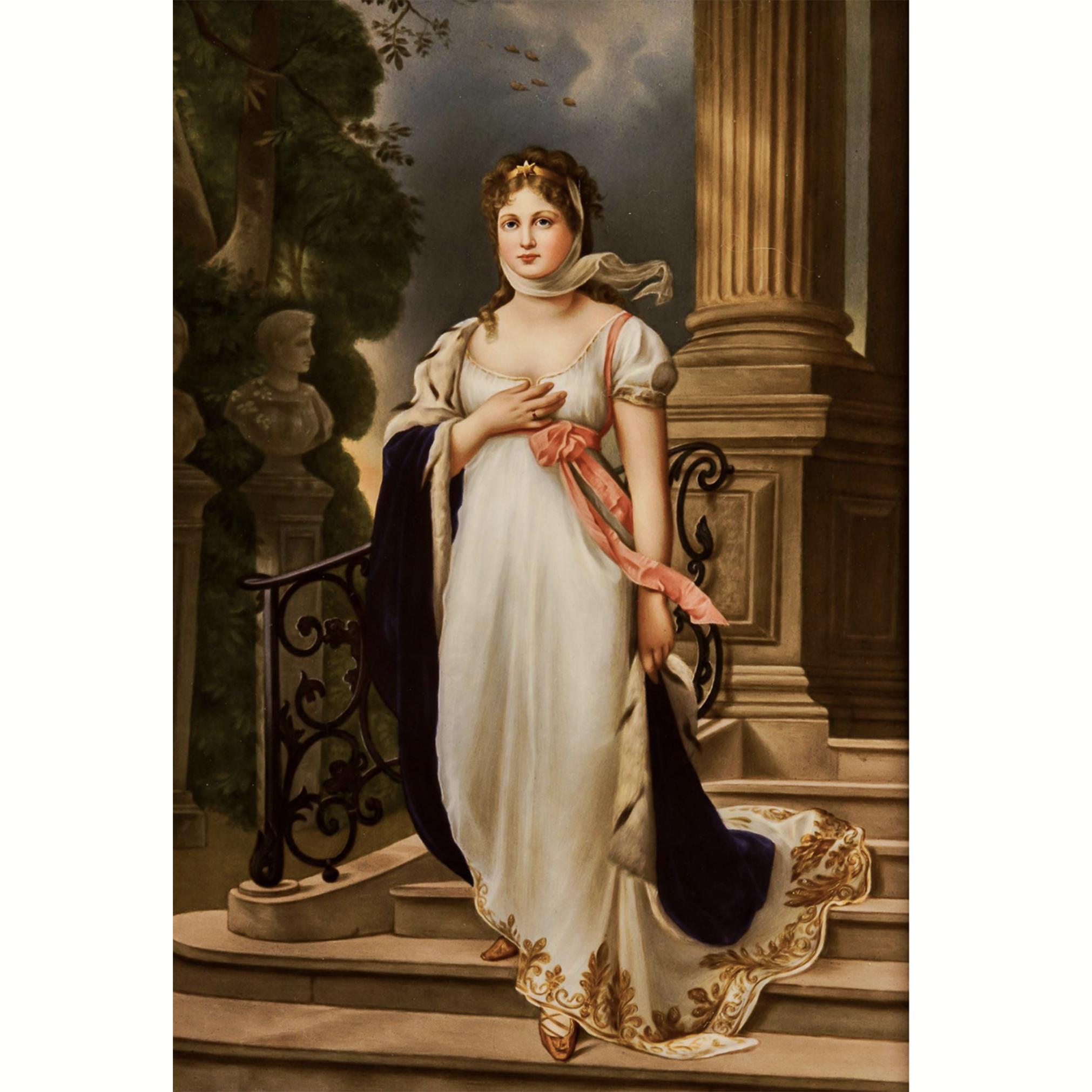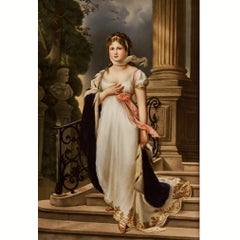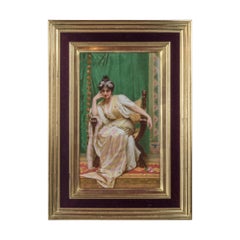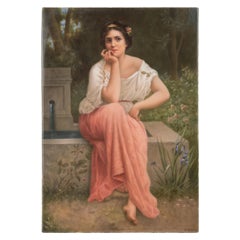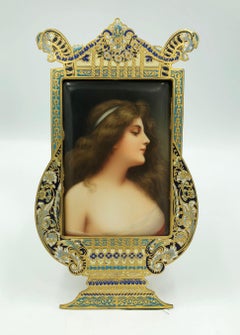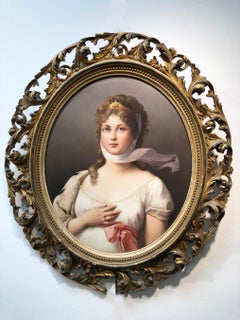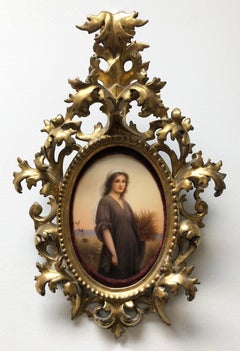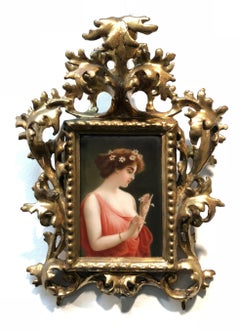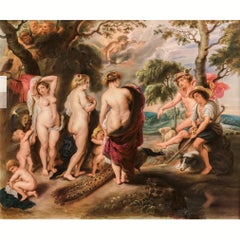
Berlin KPM Porcelain Mythological Plaque Of 'The Judgment Of Paris'
View Similar Items
Want more images or videos?
Request additional images or videos from the seller
1 of 8
UnknownBerlin KPM Porcelain Mythological Plaque Of 'The Judgment Of Paris'
About the Item
- Dimensions:Height: 11 in (27.94 cm)Width: 13 in (33.02 cm)
- Medium:
- Period:
- Condition:
- Gallery Location:New York, NY
- Reference Number:Seller: PA051922-011stDibs: LU1282110227812
About the Seller
5.0
Platinum Seller
Premium sellers with a 4.7+ rating and 24-hour response times
1stDibs seller since 2019
25 sales on 1stDibs
Typical response time: 7 hours
Authenticity Guarantee
In the unlikely event there’s an issue with an item’s authenticity, contact us within 1 year for a full refund. DetailsMoney-Back Guarantee
If your item is not as described, is damaged in transit, or does not arrive, contact us within 7 days for a full refund. Details24-Hour Cancellation
You have a 24-hour grace period in which to reconsider your purchase, with no questions asked.Vetted Professional Sellers
Our world-class sellers must adhere to strict standards for service and quality, maintaining the integrity of our listings.Price-Match Guarantee
If you find that a seller listed the same item for a lower price elsewhere, we’ll match it.Trusted Global Delivery
Our best-in-class carrier network provides specialized shipping options worldwide, including custom delivery.More From This Seller
View AllKPM Porcelain Plaque Of 'Duchess Louise Of Mecklenburg-Strelitz'
By Königliche Porzellan-Manufaktur (KPM)
Located in New York, NY
KPM Porcelain Plaque of 'Duchess Louise of Mecklenburg-Strelitz'
late 19 CENTURY Century
After a painting by Gustav Richter (German 1823-1884); verso with an impressed scepter abo...
Category
19th Century Figurative Paintings
Materials
Porcelain, Paint, Glaze
KPM Porcelain Allegorical Plaque Of Admiration Late 19th Century Plaque
Located in New York, NY
Berlin Porcelain Allegorical Plaque of Admiration
KPM, Late 19th CENTURY
The three-quarter-length portrait depicting a brunette woman with blue eyes in light ecclesiastical robes supporting palms crossed over chest and looking up over right shoulder - in a landscape immersed in powder blue sea holly...
Category
19th Century Figurative Paintings
Materials
Porcelain, Paint
Porcelain Plaque of Bejeweled Beauty by K.P.M. Berlin
By Königliche Porzellan-Manufaktur (KPM)
Located in New York, NY
An exquisite K.P.M. finely painted plaque, depicting a bejeweled beauty, seated on a curule chair, with impressed monogram and scepter mark and cyphers.
Origin: Berlin
Date: 19th c...
Category
19th Century Figurative Paintings
Materials
Porcelain
Berlin K.P.M. Portrait Porcelain Plaque of A Pensive Beauty
By Königliche Porzellan-Manufaktur (KPM)
Located in New York, NY
Finely painted after C.A. Lenoir with a pensive brunette beauty seated at the edge of a fountain well; signed in front right corner "F. Hohle," plaque impressed monogram and scepter ...
Category
19th Century Portrait Paintings
Materials
Porcelain
KPM Hand-painted Porcelain Plaque Depicting Portrait of a Beautiful Lady
By Königliche Porzellan-Manufaktur (KPM)
Located in New York, NY
Portrait of a lady with long hair, wearing a kimono
Date: late 19th/early 20th century
Origin: Berlin
Signed C. Schmidt on L/L
Dimension: 9 1/4 in x 6 1/2 in
Category
19th Century Portrait Paintings
Materials
Porcelain
K.P.M. Porcelain of Two Beauties in Classical Dress in the Courtyard
By Königliche Porzellan-Manufaktur (KPM)
Located in New York, NY
Finely painted German rectangular plaque depicting two beautiful women talking in the courtyard. One female sitting beside a flower plant, the other female standing.
Maker: K.P.M.
O...
Category
19th Century Figurative Paintings
Materials
Porcelain
You May Also Like
Épanouissement
By Königliche Porzellan-Manufaktur (KPM)
Located in Missouri, MO
KPM Porcelain
After Angelo Asti (French, 1847-1903)
"Épanouissement" c. 1900
With Original Gold Gilded Frame
Image Size: approx. 6 x 4 inches
Framed Size: approx. 9 x 6 inches
Eve...
Category
Late 19th Century Victorian Figurative Paintings
Materials
Porcelain, Oil
Price Upon Request
Queen Louise
By Königliche Porzellan-Manufaktur (KPM)
Located in Missouri, MO
KPM Porcelain
"Queen Louise" c. 1900
Original hand-painted KPM Porcelain
approx. 14 x 11 inches
approx. 21 x 15 inches framed
Since 250 years, the royal ...
Category
Late 19th Century Victorian Figurative Paintings
Materials
Porcelain, Oil
Price Upon Request
Ruth
By Königliche Porzellan-Manufaktur (KPM)
Located in Missouri, MO
KPM Porcelain
"Ruth" c. 1900
Original hand-painted KPM Porcelain
In Original Gilded Florentine Frame
7 x 4 (16 x 9 framed)
Since 250 years, the royal sceptre brand stands for finest...
Category
Late 19th Century Victorian Figurative Paintings
Materials
Porcelain, Oil
Price Upon Request
Marguerite
By Königliche Porzellan-Manufaktur (KPM)
Located in Missouri, MO
Marguerite
Hand Painted Porcelain
w/crown stamp #107
Signed "Wagner"
Original Gilded Florentine Frame
approx 6 x 4 inches /approx 14 x 8 inches framed
Since 250 years, the royal sc...
Category
Late 19th Century Victorian Figurative Paintings
Materials
Porcelain, Oil
Price Upon Request
Napoleon
By Manufacture Nationale de Sèvres
Located in Missouri, MO
Sevres 19th C.
Original Hand Painted Porcelain
Signed "G Poitevin"
approx 9 x 5 inches/15 x 12 framed
The vast and diverse production of the Sèvres factory in the nineteenth century resists easy characterization, and its history during this period reflects many of the changes affecting French society in the years between 1800 and 1900. Among the remarkable accomplishments of the factory was the ability to stay continuously in the forefront of European ceramic production despite the myriad changes in technology, taste, and patronage that occurred during this tumultuous century.
The factory, which had been founded in the town of Vincennes in 1740 and then reestablished in larger quarters at Sèvres in 1756, became the preeminent porcelain manufacturer in Europe in the second half of the eighteenth century. Louis XV had been an early investor in the fledgling ceramic enterprise and became its sole owner in 1759. However, due to the upheavals of the French Revolution, its financial position at the beginning of the nineteenth century was extremely precarious. No longer a royal enterprise, the factory also had lost much of its clientele, and its funding reflected the ruinous state of the French economy.
However, the appointment in 1800 of Alexandre Brongniart (1770–1847) as the administrator of the factory marked a profound shift in its fortunes. Trained as both an engineer and a scientist, Brongniart was both brilliant and immensely capable, and he brought all of his prodigious talents to the running of the troubled porcelain factory. He directed the Sèvres factory as administrator until his death in 1847, and during those five decades influenced every aspect of its organization and production. Much of the factory’s old, undecorated stock was immediately sold off, and new forms—largely in the fashionable, more severe Neoclassical style—were designed to replace out-of-date models. The composition for hard-paste porcelain was improved, and the production of soft paste, for which the factory had been famous in the previous century, was abandoned in 1804. New enamels colors were devised, and Brongniart oversaw the development of a new type of kiln that was both more efficient and cost-effective.
Much of the factory’s output during Brongniart’s first decade reflected the prevailing Empire taste, which favored extensive gilding, rich border designs, and elaborate figural scenes (56.29.1–.8). Backgrounds simulating marble or a variety of hardstones were employed with greater frequency (1987.224); the new range of enamel colors developed under Brongniart made it easier to achieve these imitation surfaces, and it is thought that his interest in mineralogy provided the impetus for this type of decoration.
For objects produced in sets, such as dinner, tea, and coffee services, and even garnitures of vases, Brongniart preferred decorative schemes that linked the objects in terms of subject matter as well as stylistically. Dinner services were given coherence by the use of an overall theme, in addition to shared border patterns and ground colors. One of the best examples of this can be found in the “Service des Départements,” which was conceived by Brongniart in 1824 (2002.57). Each of the plates in the service was decorated with a famous topographical view of the département (administrative unit) of France that it represented, and its border was painted with small cameo portraits of figures from the region, as well as symbols of the major arts, industries, and products of the area. This same type of thematic unity is found on a coffee service produced in 1836 (1986.281.1ab–4). All of the pieces of the service are decorated with scenes depicting the cultivation of cacao, from which chocolate is made, or various stages in the preparation of chocolate as a beverage. The compositions were conceived and executed by Jean Charles Develly, a painter at Sèvres who was responsible for many of the most ambitious dinner services produced at the factory during Brongniart’s tenure.
The range of objects produced in the first half of the nineteenth century was enormous, as were the types of decoration that they employed. A recent exhibition catalogue devoted to Brongniart’s years at Sèvres indicates that ninety-two new designs for vases were introduced, as were eighty-nine different cup models, and the types of objects produced by the factory included every sort of form required by a dinner or dessert service, coffee and tea wares, decorative objects such as vases, and functional objects such as water jugs, basins, and toiletry articles. A new form rarely replaced an older one; the range of production simply increased.
The same was true with types of decoration, as the factory was working in a wide variety of styles at any given time. From the earliest years of the Sèvres factory, its painters had copied not only contemporary compositions but also prints and paintings from earlier periods. However, under Brongniart, the factory sought to copy famous paintings with the specific intention of recording the “true” appearance of works increasingly perceived to be fragile. Works by a wide variety of artists were copied, but those by Raphael were especially popular. Raphael’s stature is reflected in a vase of 1834 in which a cameo-style portrait of the artist decorates the primary reserve, while on the back an artist’s palette is encircled by the names Titian, Poussin, and Rubens (1978.373).
Just as works by earlier artists were copied, so too were decorative techniques of previous centuries. The interlace patterns of so-called Saint-Porchaire ceramic ware of the sixteenth century served as the inspiration for the decoration on a cup of 1837 (2003.153). The form of the cup itself derives from Renaissance silver forms made in Italy and France. However, the palette of vibrant reds, greens, blues, and yellows contrasts markedly with the muted browns and off whites of Saint-Porchaire wares and reflects the reinterpretation of historical styles that was characteristic of so much of nineteenth-century decorative arts.
Interest in the Gothic style emerged early in Brongniart’s tenure at Sèvres and remained popular for much of the nineteenth century. Strict adherence to Gothic motifs was rarely observed, however, and the Gothic style was more evoked than faithfully copied. This tendency is reflected in a pair of vases (1992.23.1) for which the model was designated vase gothique Fragonard (named after the vase’s designer, Alexandre Evariste Fragonard [1780–1850]. The Gothic elements lie more in the painted decoration than in the form itself, and the style of the painting reflects a Renaissance technique rather than a medieval one. The palette of grays and whites on a blue ground instantly recalls the enamel-on-copper wares produced in Limoges, France, in the sixteenth century, and its use on these vases indicates the willingness to freely mix artistic styles and techniques of different periods in order to achieve new aesthetic effects.
The eclecticism and historicism that characterized so much of the production during Brongniart’s tenure continued after his death in 1847. The factory’s output reflected an ongoing desire for technical innovation as well as a wide embrace of diverse decorative styles that were employed simultaneously. A tea and coffee service of 1855–61 (69.193.1–.11) embodies the selective borrowing of forms and motifs that is found so frequently in Sèvres production of the middle decades of the nineteenth century. The shapes used for the different components of the service evoke both China and the Near East, an obvious allusion to the origins of the two beverages. The openwork decoration refers directly to Chinese ceramics made in this technique, and the decoration employs a variety of Chinese emblems. However, the palette of pink and gold, entirely European in character, serves to neutralize the Asian aspects of the service.
Perhaps the only thread that can be said to run through much Sèvres production of the nineteenth century is the proclivity to borrow freely from various historical styles and then to either reinterpret these styles or combine them in unprecedented ways. A standing cup of 1879 (1990.238a,b) draws upon silver cups of the Renaissance for its form, but in this instance the size of the porcelain cup dwarfs any of its metal prototypes. Its style of decoration derives from Limoges painted enamels of the sixteenth century, but the prominent use of gilding throughout reflects its wholly nineteenth-century character. This cup was presented by the French government to one of the first-prize winners at the 1878 Exposition Universelle.
It was with the advent of the Art Nouveau style at the very end of the nineteenth century that historicism lost its grip at Sèvres, and indeed throughout the decorative arts, and forms inspired by nature and often characterized by asymmetry become dominant. This reliance upon natural forms is fully evident in a coffee service of 1900–1904 (1988.287.1a,b). The designer, Léon Kann...
Category
Late 19th Century Figurative Paintings
Materials
Porcelain, Oil
Price Upon Request
Queen Louise
By Königliche Porzellan-Manufaktur (KPM)
Located in Missouri, MO
KPM Porcelain
"Queen Louise" c. late 19th century
Original Hand-Painted Porcelain
Signed "R. Dittrich"
Since 250 years, the royal sceptre brand stands fo...
Category
Late 19th Century Victorian Figurative Paintings
Materials
Porcelain, Oil
Price Upon Request
Recently Viewed
View AllMore Ways To Browse
Kpm Rubens
Original Oil Interior Scene
Painting Men Working
Arts And Crafts Canadian
Paintings Of Little Girls
At Tea Painting
Large Framed Painting Nude
Mother Mary
Oil Paintings White Dress
17th Century Dutch Oil
Spanish Village Painting
Portrait Of A Soldier
S Francis Paintings
16th Oil
Cafe Scene Painting
1960 Indian Art
Acrylic Cartoon Paintings
1950s Portrait Oil Paintings
